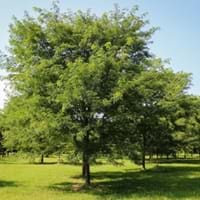Life Span
Annual and Perennial
Annual
Type
Bulb or Corm or Tuber
Trees
Origin
Central America, South America
China, Korea
Types
Vine, Flowering plant
Sophora japonica
Number of Varieties
Not Available
Habitat
All sorts of environments, Along Railroads, Banks, Moist Ditches, Roadsides, rocky banks of streams
Humid climates, Loamy soils, Low annual rainfall regions, Wet ground, Woods
USDA Hardiness Zone
10-13
5-9
Sunset Zone
21,22
2a, 2b, 3a, 3b, 4, 5, 6, 7, 8, 9, 10, 11, 12, 13, 14, 15, 16, 17, 18, 19, 20, 21, 22, 23, 24
Habit
Vining/Climbing
Oval or Rounded
Minimum Width
Not Available
Flower Color
Purple, Rose
White, Light Green
Flower Color Modifier
Bicolor
Bicolor
Fruit Color
Not Available
Green
Leaf Color in Spring
Purple, Dark Green, Black
Dark Green
Leaf Color in Summer
Light Green
Dark Green
Leaf Color in Fall
Several shades of Green
Yellow, Dark Green
Leaf Color in Winter
Light Green
Not Available
Leaf Shape
Acicular
Elliptic
Plant Season
Spring, Summer, Fall, Winter
Spring, Summer, Fall, Winter
Sunlight
Full Sun, Partial Sun
Full Sun
Growth Rate
Very Fast
Fast
Type of Soil
Clay, Loam, Sand
Clay, Loam, Sand
The pH of Soil
Acidic, Neutral, Alkaline
Acidic, Neutral, Alkaline
Soil Drainage
Well drained
Average
Bloom Time
Late Spring, Early Summer, Summer, Late Summer, Early Fall, Fall, Late Fall
Summer
Tolerances
Drought
Pollution, Drought, Soil Compaction
Where to Plant?
Container, Ground
Ground
How to Plant?
Cuttings, Leaf Cutting, Tuber propagation
Seedlings, Transplanting
Plant Maintenance
Medium
Medium
Watering Requirements
Keep the Soil well drained, Needs very little water
occasional watering once established, Requires watering in the growing season
In Summer
Lots of watering
Less Watering
In Spring
Moderate
Less Watering
In Winter
Average Water
Drought Tolerant
Soil pH
Acidic, Neutral, Alkaline
Acidic, Neutral, Alkaline
Soil Type
Clay, Loam, Sand
Clay, Loam, Sand
Soil Drainage Capacity
Well drained
Average
Sun Exposure
Full Sun, Partial Sun
Full Sun
Pruning
Remove damaged leaves, Remove dead branches, Remove dead leaves
Prune when young, Remove dead branches
Fertilizers
All-Purpose Liquid Fertilizer
All-Purpose Liquid Fertilizer
Pests and Diseases
Red blotch
Leaf spot, Red blotch, Woodpecker feeding
Plant Tolerance
Drought
Drought, Dry soil, Soil Compaction
Flower Petal Number
Single
Single
Foliage Texture
Coarse
Medium
Foliage Sheen
Matte
Matte
Attracts
Aphids, Beetles, Cutworms, Insects, Mites, Whiteflies
Bees, Hummingbirds, Woodpeckers
Allergy
Abdominal pain, allergic reaction, Nausea, Skin rash, Twitching of face
Eczema, Nausea, Swelling in the face
Aesthetic Uses
Not Used For Aesthetic Purpose
Bouquets, Landscape Designing, Showy Purposes
Beauty Benefits
Not Available
Nourishes scalp, Restores Hair Colour, Stops hair loss
Edible Uses
Yes
Sometimes
Environmental Uses
Air purification
Air purification, Erosion control, Forms dense stands, Shadow Tree
Medicinal Uses
Cures constipation, Fiber, Low calories, lowering blood pressure, Potassium, ß-carotene, Vitamin A, Vitamin C
Diuretic, Fever, Muscle Pain, Vomiting
Part of Plant Used
Leaves, Root, Shoots, Stem, Tuber
Bark, Leaves
Other Uses
Starch, Used As Food, Used as Ornamental plant
Used as a laxative, Used as firewood, Used as Ornamental plant, Used in construction
Used As Indoor Plant
Sometimes
No
Used As Outdoor Plant
Yes
Yes
Garden Design
Container, Edible, Groundcover, Hanging Basket, Herb / Vegetable, Mixed Border, Rock Garden / Wall, Vine
Shade Trees, Street Trees, Topiary / Bonsai / Espalier
Botanical Name
IPOMOEA batatas 'Blackie'
SOPHORA japonica
Common Name
Blackie Sweet Potato Vine, Sweet Potato Vine
Chinese Scholartree, Japanese Pagoda
In Hindi
शकरकन्द
Gobur champ
In German
Süßkartoffel
Japanischer Schnurbaum
In French
Patate douce
Styphnolobium japonicum
In Spanish
Ipomoea batatas
Styphnolobium japonicum
In Greek
Sweet potato
Styphnolobium japonicum
In Portuguese
Batata-doce
Styphnolobium japonicum
In Polish
Wilec ziemniaczany
Perełkowiec japoński
In Latin
Ipomoea batatas
Styphnolobium japonicum
Phylum
Tracheophyta
Angiosperms
Class
Magnoliopsida
Magnoliopsida
Family
Convolvulaceae
Fabaceae
Genus
Ipomoea
Styphnolobium
Clade
Angiosperms, Asterids, Eudicots
Angiosperms, Eudicots, Rosids
Tribe
Not Available
Sophoreae
Subfamily
Not Available
Faboideae
Number of Species
Not Available
Not Available
Season and Care of Sweet Potato Vine and Japanese Pagoda
Season and care of Sweet Potato Vine and Japanese Pagoda is important to know. While considering everything about Sweet Potato Vine and Japanese Pagoda Care, growing season is an essential factor. Sweet Potato Vine season is Spring, Summer, Fall and Winter and Japanese Pagoda season is Spring, Summer, Fall and Winter. The type of soil for Sweet Potato Vine is Clay, Loam, Sand and for Japanese Pagoda is Clay, Loam, Sand while the PH of soil for Sweet Potato Vine is Acidic, Neutral, Alkaline and for Japanese Pagoda is Acidic, Neutral, Alkaline.
Sweet Potato Vine and Japanese Pagoda Physical Information
Sweet Potato Vine and Japanese Pagoda physical information is very important for comparison. Sweet Potato Vine height is 15.00 cm and width Not Available whereas Japanese Pagoda height is 1,220.00 cm and width 1,220.00 cm. The color specification of Sweet Potato Vine and Japanese Pagoda are as follows:
Sweet Potato Vine flower color: Purple and Rose
Sweet Potato Vine leaf color: Purple, Dark Green and Black
Japanese Pagoda flower color: White and Light Green
- Japanese Pagoda leaf color: Dark Green
Care of Sweet Potato Vine and Japanese Pagoda
Care of Sweet Potato Vine and Japanese Pagoda include pruning, fertilizers, watering etc. Sweet Potato Vine pruning is done Remove damaged leaves, Remove dead branches and Remove dead leaves and Japanese Pagoda pruning is done Prune when young and Remove dead branches. In summer Sweet Potato Vine needs Lots of watering and in winter, it needs Average Water. Whereas, in summer Japanese Pagoda needs Less Watering and in winter, it needs Drought Tolerant.





